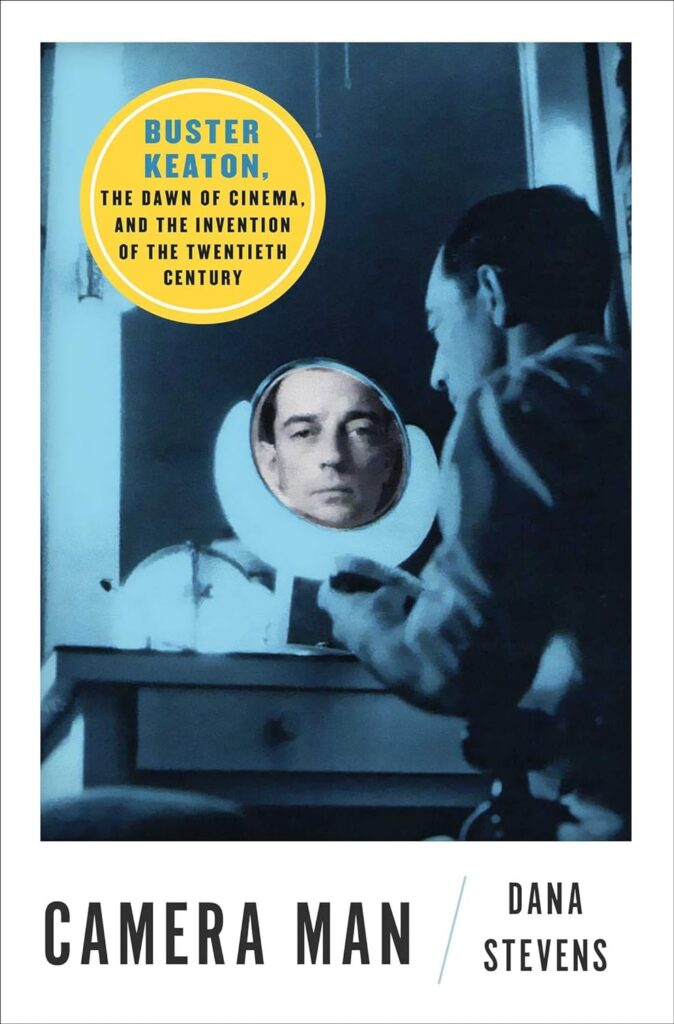
Staff Pick: Camera Man
Camera Man (2022) by film critic Dana Stevens is a biography of Buster Keaton told through the lens of the massive cultural, technological, and social changes that occurred from the year of his birth in 1895 to his death in 1966.

Stevens tracks the trajectory of Keaton’s life beginning with the birth of cinema to the new medium’s triumph over vaudeville and theater, and how Keaton was a major innovator in each form he worked in, but especially silent movies. Keaton spent his childhood as the main breadwinner in his family’s vaudeville act, The Three Keatons, as this form of entertainment began to share the bill with short films, one and two reelers, that were being produced at a rapid rate. After he disbanded the family act, Keaton made connections with some of the great early screen comedians including Roscoe “Fatty” Arbuckle, and began to learn the art of filmmaking and directing. He was able to produce incredible work including The General (1926), The Navigator (1924), and Steamboat Bill, Jr. (1928). Stevens’s examination of his downfall in Hollywood is detailed and frustratingly tantalizing as to what Keaton could have done when sound came to the cinema if he had kept creative control over his work, or if he had not fallen deeper into alcoholism.
In one chapter, she does a close reading of Keaton’s directorial debut One Week about a couple’s disastrous attempt to build a prefabricated house gifted to them for their wedding. The mix-up in directions and a hurricane create a whirling dervish of boards, planks, and rooms that defy physics yet still make sense in the world Keaton has constructed. Leaping off that Stevens weaves in the multiple houses Keaton built and lived in, and a history of the Sears mail order house kits that Americans began building as the country transitioned from a rural, agrarian society to a more mobile urban one.
Other chapters parallel Keaton’s alcoholism with the start of Alcoholics Anonymous, the invention of television, and how Keaton was able to successfully transition to that medium. Far from a fawning biography, she examines Keaton’s apolitical nature on the treatment of the Civil War in The General (1926). She also writes of his collaboration with Samuel Beckett on Film (1965), a copy of which is housed in our special collections. Overall, this is a fascinating cultural biography that readers will enjoy even if they are familiar with Keaton’s life and work.
Alison Carrick is the instruction and outreach archivist at WashU Libraries.
